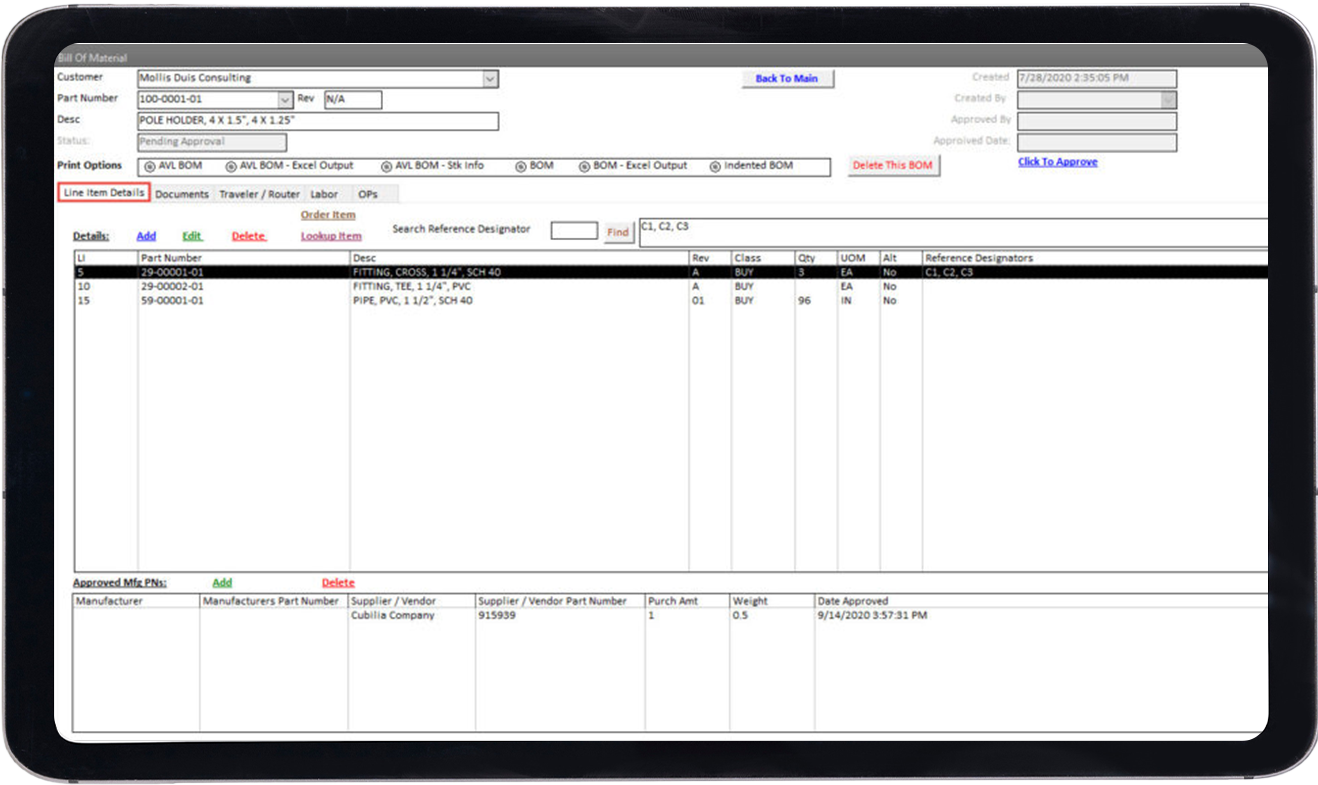Bill of Materials Management
Prepare and Manage Bill of Material (BOMs) with Ease in our Bill of Material Management module. Accurate, thorough, updated bill of materials improves decision-making and facilitates efficient production processes.

Bill of Material (BOM) is absolutely essential for manufacturing companies.
Here’s why:
Accuracy and Efficiency
Bill Of Material ensure that all components are accounted for, which reduces the chances of errors and ensures that the manufacturing process is smooth and efficient.
Cost Management
A detailed Bill Of Material helps in tracking the cost of each component, which in turn helps in budgeting and financial planning.
Inventory Control
By listing all the materials needed, BOMs help in maintaining optimal inventory levels and preventing both shortages and excess stock.
Production Planning
Bill Of Material provide a clear roadmap of the production process, helping in scheduling and resource allocation.
Quality Control
Detailed Bill Of Material ensure that the right components are used, which helps in maintaining the quality of the final product.
Traceability
Bill Of Materialmake it easier to trace the origin of components and materials, which is crucial for compliance and quality assurance.
Collaboration
Bill Of Material serve as a common reference point for various teams, including engineering, manufacturing, and procurement, facilitating better communication and collaboration.
Every Bill of Material (BOM) should have specific details to ensure clarity and efficiency in the manufacturing process.
Here are the key elements each Bill Of Material must include:
Bill Of Material Level
This indicates the hierarchy of the items. It helps in understanding the structure and components of the product.
Part Number
A unique identifier for each item. It ensures that everyone refers to the same component without confusion.
Part Name
A descriptive name for each item, making it easier to understand what the part is.
Quantity
The number of each item required for the assembly or product.
Unit of Measure
Specifies how the item is measured (e.g., pieces, meters, kilograms).
Description
A detailed description of the part, including any specifications or requirements.
Procurement Type
Indicates whether the part is purchased, manufactured in-house, or subcontracted.
Lead Time
The time it takes to procure or manufacture the item.
Cost
The cost of each item, helping in budgeting and financial planning.
Supplier Information
Details about the supplier of the part, including contact information and part numbers.
Revision Level
The version of the part, ensuring that the latest design or specification is used.
Assembly Instructions
Any specific instructions or notes for assembling the part. Including these details in a Bill Of Material ensures that all aspects of the manufacturing process are covered, reducing the risk of errors and improving overall efficiency.
Bill of Material (BOM) is absolutely essential for manufacturing companies.
That is why it is included in SimpleManufacturing™!
Simple Manufacturing
Our Bill Of Material Management Features

Common Bill Of Material Information

Common Line-Item Information

Primary / Alternate Parts

Approved Vendor / Manufacture Part Numbers List

Document Links

Router / Traveler / Process Work Flows

Reference / Drawing Location

Review / Approval Options

Reports

Comprehensive Search

Data Change History
